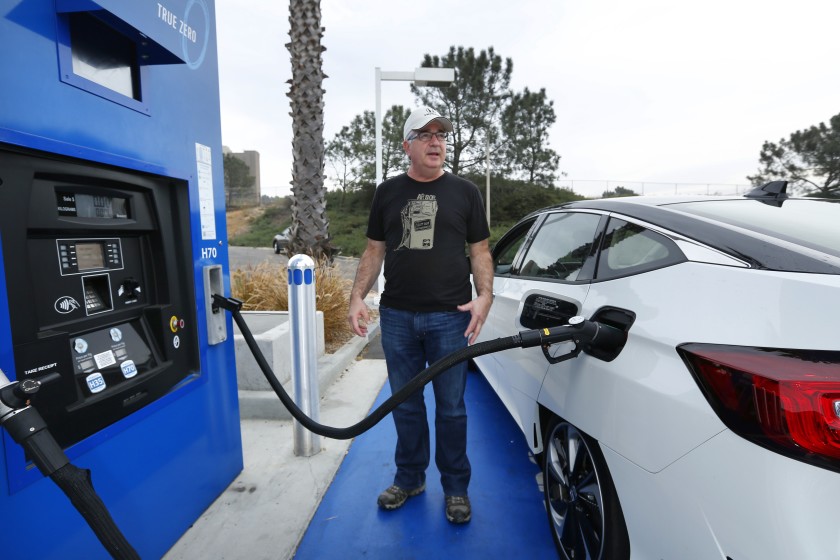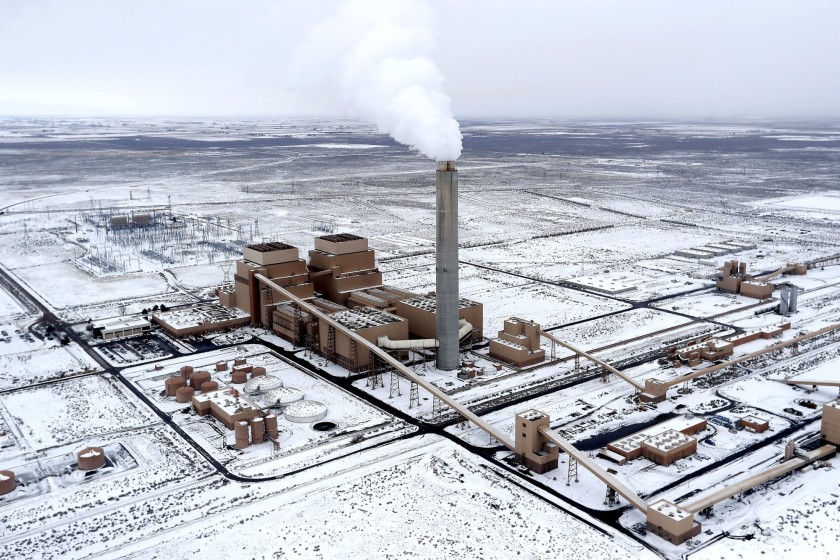When the project starts in 2025, Browning said the turbines will use 30 percent hydrogen and 70 natural gas instead of coal. By 2045, the plan is to use 100 percent hydrogen, fed by renewable sources.
Hydrogen also can be applied to residential and commercial power. Work is being done to blend the element into the natural gas transmission and distribution system.
Combined Heat and Power, or CHP, systems can lead to 35 percent to 50 percent reductions in emissions by conventional means and the U.S. Department of Energy has estimated reductions of more than 80 percent if hydrogen from low- or zero-carbon sources are used in a fuel cell.
How do you make it?
Since hydrogen does not typically exist by itself, it must be produced from compounds that contain it. The element can be produced using a wide range of resources that use different production methods.
Given the emphasis policymakers have placed on clean energy, most of the attention has focused on making "blue hydrogen" and "green hydrogen."
In blue hydrogen, natural gas — which contains hydrogen as part of natural gas's methane compound — is commonly put into a steam methane reformer. The reformer isolates the hydrogen but leaves behind carbon dioxide, or CO2. Since CO2 is a greenhouse gas, it is then captured and stored instead of getting released into the atmosphere. It's estimated the process could cut the amount of carbon produced in half.
In green hydrogen, the element is produced using renewable energy sources, such as wind, solar, hydropower or even biomass. One process getting substantial attention is electrolysis, in which electricity from carbon-free sources is sent into an electrolyzer and water — made up of hydrogen and oxygen, H2O — is pumped into it. Out comes hydrogen and no carbon emissions are released, hence the term "green hydrogen."
Hurdles, promoters and skeptics
But the process used to produce hydrogen is expensive and the cleaner the version, the more costly it gets. Hydrogen now accounts for less than 5 percent of the world's energy supply, so to build and expand its reach will be expensive.
Keen to meet its climate goal of reducing greenhouse gas emissions 55 percent by 2030, the European Union has taken the early lead in promoting hydrogen. Last summer, the EU produced a roadmap that called for spending up to $569 billion (470 billion euros) in green hydrogen investments by 2050.
President Joe Biden's $2 trillion plan to tackle climate change includes hydrogen but no specific dollar figure was attached to it in his clean energy proposal that was released on the campaign trail.
Hydrogen's advocates are counting on costs coming down as the hydrogen becomes more ubiquitous — similar to the economies of scale that have led to steep declines in the costs of solar, wind and batteries. There are certainly no guarantees that hydrogen can duplicate that but analysts at IHS Markit have predicted the production of green hydrogen could become cost competitive in nine years.
On the infrastructure side, there are issues with hydrogen's compatibility with existing pipes in the natural gas system. When exposed to hydrogen over time, some types of steel pipes can become brittle and crack.
San Diego Gas & Electric and Southern California Gas have partnered with the
National Fuel Cell Research Center at UC Irvine on a blending program in which hydrogen will be injected into plastic pipes to see how it performs. The initial blend level will be 1 percent and may increase to 20 percent.
"Steel pipes don't do well; plastic does a lot better," said
Kevin Sagara, group president at Sempra Energy, the parent company of SDG&E and SoCalGas. "So we'll start with plastic, see how that goes and then slowly scale it up to other types of pipe."
The program is one of seven hydrogen projects Sempra companies are taking part in. Earlier this month, SoCalGas announced it will spend $1.3 million to fund the development of hydrogen refueling stations at ports and fuel cells for marine vessels and locomotives.
California recently set a mandate to derive 100 percent of its electricity from carbon-free sources by 2045 but even though Sempra touts owning the largest natural gas franchise in the Western Hemisphere, Sagara said the Fortune 500 company is "all in" on hydrogen.
"We want to lead in this area," Sagara said. "Our grid will be the backbone for not only continuing this path of electrification but then delivering renewable electricity to make the clean molecules like hydrogen to decarbonize those other sectors" of the energy economy.
Ever versatile, hydrogen can also be liquefied, which can play into the millions of dollars Sempra has invested in liquefied natural gas, or LNG, facilities. "You could see a big hydrogen hub down in the Gulf by Texas, where there's ample storage, lots of low-cost renewables — both solar and wind," Sagara said. "It's one of the best places to make hydrogen."
Talk like that riles
Matt Vespa, staff attorney of the environmental group EarthJustice, who says fossil fuel companies are latching onto hydrogen as a lifeline.
"I think there's this broader play by the gas industry to suggest there's some Holy Grail that will allow us to keep the gas system running as it currently does, just with a different fuel," Vespa said.
For one, he's very skeptical that hydrogen can be safely injected into gas pipelines to a degree where it makes a substantial environmental improvement. "There's really not a lot you could do with existing pipeline structure without having to completely replace the pipelines and appliances that currently run on gas," Vespa said.
Many environmentalists want resources spent on green hydrogen projects that use electrolyzers, not on blue hydrogen that uses natural gas or other fossil fuels as a feedstock.
"Let's concentrate on that and also target the applications where (hydrogen) has the most greenhouse gas benefit," Vespa said.
At the California Legislature,
Sen. Nancy Skinner, D-Berkeley, has introduced Senate Bill 18 that would direct state agencies to designate green hydrogen as a key energy source for all renewable power uses and long-term storage to help propel investment and technology.
When she introduced the bill, Skinner called hydrogen "the only renewable energy source that has the potential to decarbonize all aspects of our economy. To put it simply: We might not get to a carbon-free world without it."
Globally, investments in hydrogen are expected to grow to more than $700 million in the next two years and hardly a week goes by without news of another hydrogen investment, initiative or research program.
Air Liquide, which has been in the hydrogen business for 50 years, is constructing a $150 million plant near Las Vegas that will turn biogas from organic waste into hydrogen and then sell it in California to power hydrogen fuel cell vehicles, forklifts, as well as other applications.
Last month, the company announced plans to build the world's largest electrolyzer, using hydroelectricity in Quebec to produce hydrogen.
"Does hydrogen ever fully replace gasoline, diesel and natural gas? It'll play its part in replacing those, without a doubt," said Edwards of Air Liquide. "You'll see it as a transportation fuel, as a home fuel, as an industrial fuel. You'll see it in all of these places over time and 50 years from now, I think it will be very common across all those sectors."


